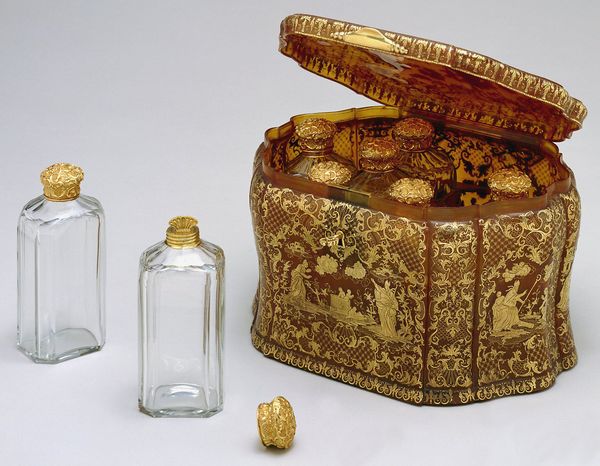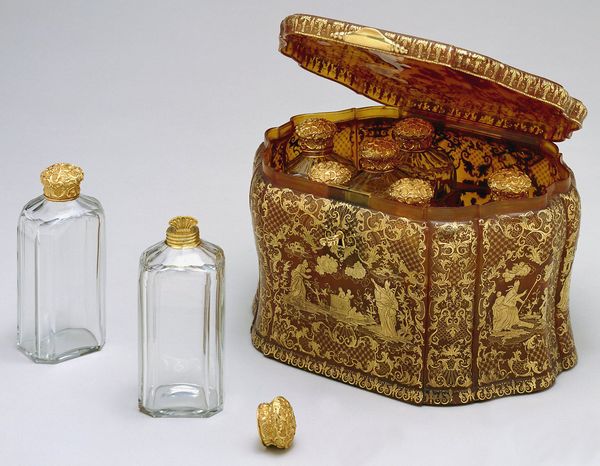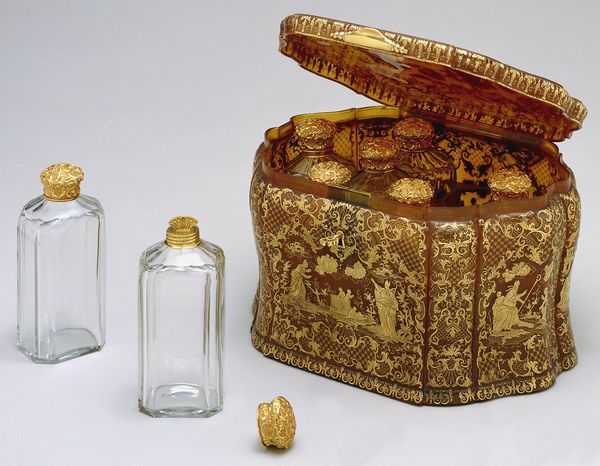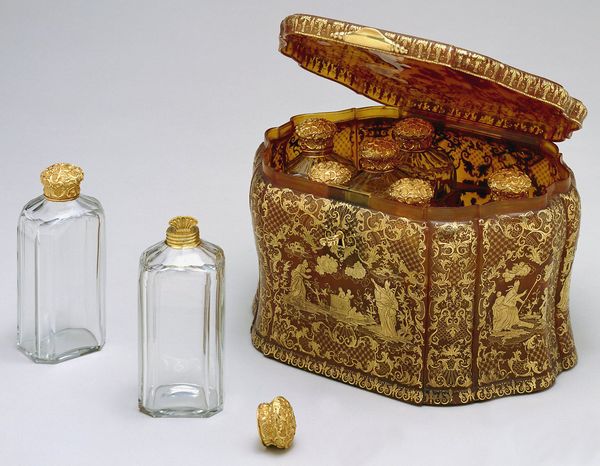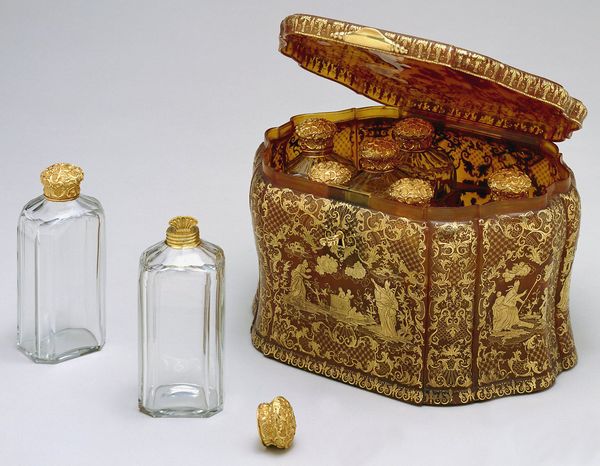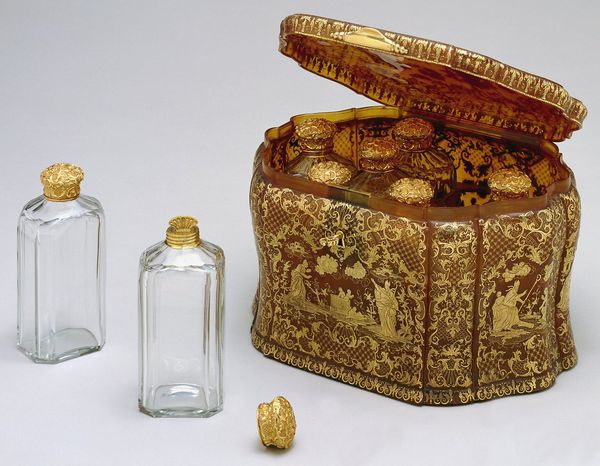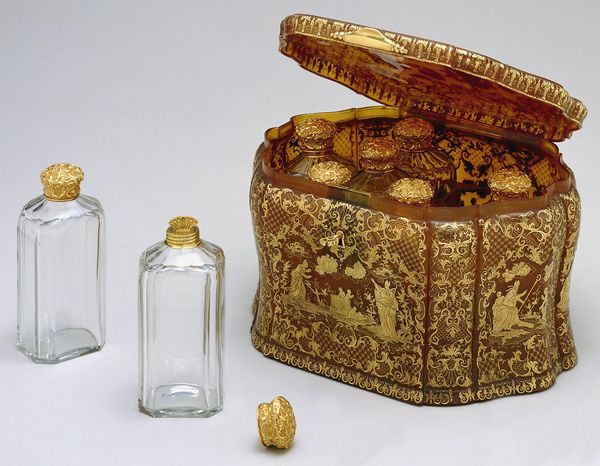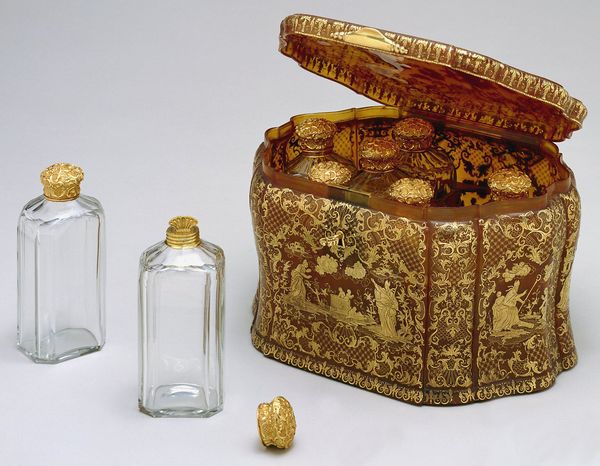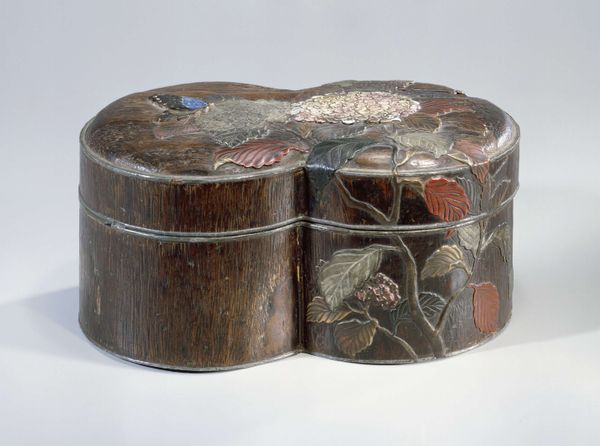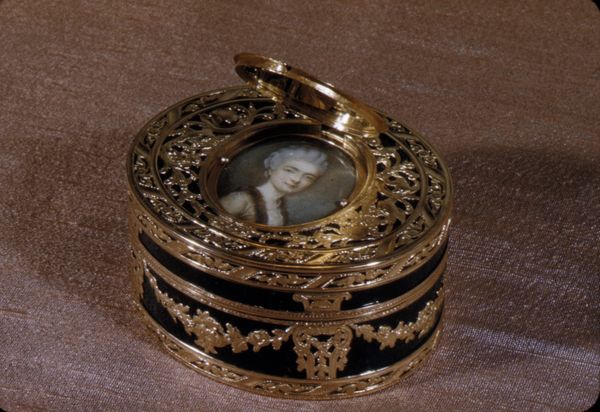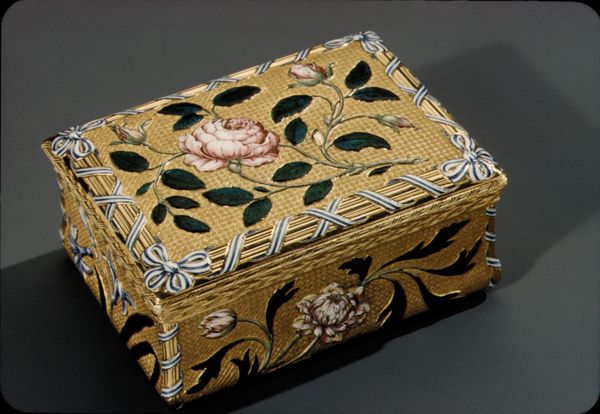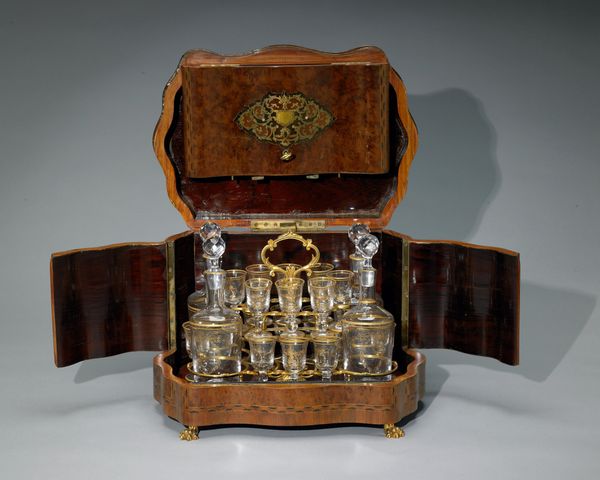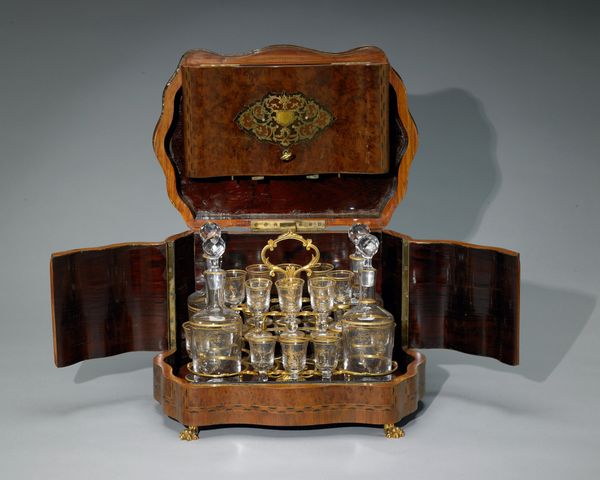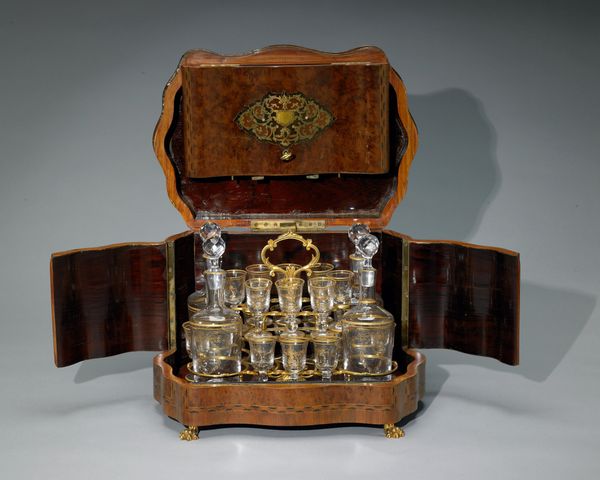
glass
#
glass
#
decorative-art
#
rococo
Copyright: Public Domain
This gilded glass bottle and box, of unknown origin, is adorned with imagery from classical antiquity. We see scenes reminiscent of ancient Roman friezes, with figures in togas enacting rituals or making offerings, frozen in stylized gestures. Such imagery evokes a longing for the perceived order and harmony of the classical world. The figures, rendered in gold, stand out as beacons of a past age. But consider how these figures have been reimagined and repeated across centuries, from Renaissance paintings to Neoclassical sculptures. The recurring motifs reveal our collective yearning for an ideal, a golden age. The repetition of such imagery is not merely imitation, but a re-experiencing, an attempt to reconnect with cultural roots. This ornate bottle reminds us that symbols persist, reborn in new forms, echoing through time.
Comments
minneapolisinstituteofart almost 2 years ago
⋮
The box is decorated with scenes from the life of St. Nicholas of Myra. This fourth century Greek bishop, who was the patron saint of children, sailors and travelers and the guardian of young women, was the forerunner of St. Nicholas or Father Christmas. The gold scenes were applied in a piqué technique whereby thin sheets of gold are impressed into tortoiseshell which has been softened in boiling water and olive oil. Once the shell cools, it contracts and the gold is securely held in place. This technique was first introduced at the end of the sixteenth century in Naples, and by the following century it had spread to France, England and northern Europe, with Paris and Naples as the principal centers. The costly and time-consuming nature of this intricate technique imply that it was used on only the most expensive small luxury items such as inkstands, trays, snuffboxes and boxes for toilet articles, in this case gold-mounted perfume bottles.
Join the conversation
Join millions of artists and users on Artera today and experience the ultimate creative platform.
